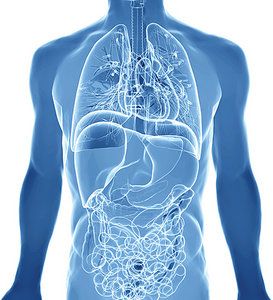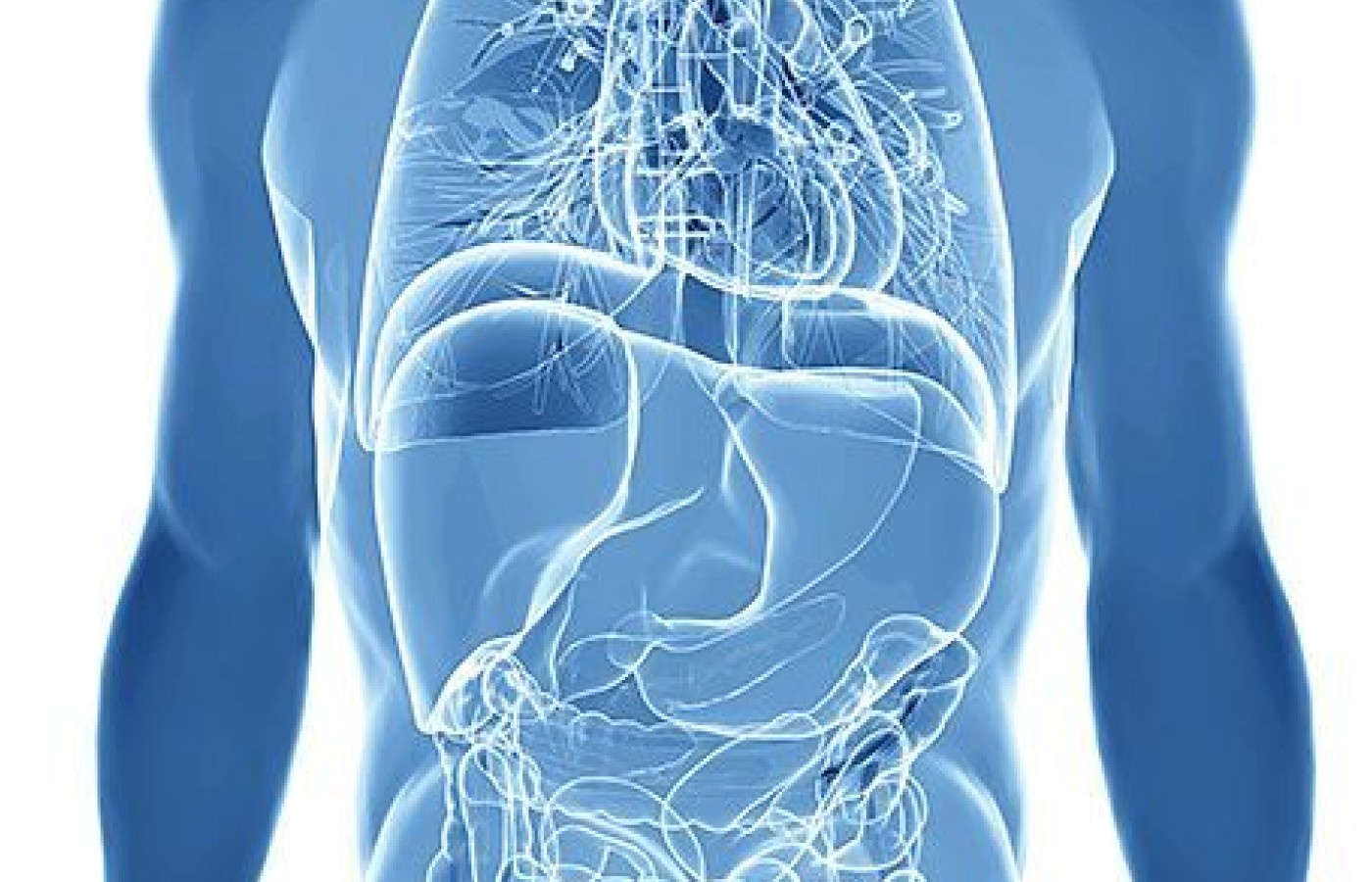You became a chiropractor to serve people, not an insurance company. You deserve to run a business that aligns with your values, supports your family and lights you up. Cash-based care isn’t just a pricing model – it’s a philosophy rooted in freedom, trust and respect for your patients and for yourself. Here's why - and how - to do it.
The Skinny on Ectopic Fat
Obesity and cardiometabolic syndrome are reaching monumental levels throughout the United States. As of 2010, 66 percent of adults are overweight or obese.1 In clinical practice, we witness this every day. The good news is we have a tremendous amount of power to educate our patients on the real impacts of obesity and options to improve their health.
For many years, medicine has focused on the traditional cardiometabolic risk factors: age, blood pressure, lipid profile, gender, hyperglycemia and smoking. But as the body of research has grown, so too has our understanding of some important emerging cardiometabolic risk markers; Atherogenic dyslipidemia, insulin resistance, abdominal obesity, pro-thrombotic profile, and inflammatory state all seem to have powerful predictive power on the development of cardiometabolic comorbidities. While all of these emerging factors are important, an important focus area should be abdominal obesity or ectopic fat, as its presence can affect all of the other factors.
The Consequences of Ectopic Fat
Ectopic fat accumulates on the organs or viscera and is occasionally termed visceral fat. Many factors exist which increase the deposition of ectopic fat, but a major biochemical trigger is improper activation and inhibition of AMP-activated protein kinase (AMPK), which can be viewed at the metabolic master switch. It is affected through improper insulin signaling and during adrenergic stimulation (stress response).

The inhibition of AMPK results in de novo lipogenesis, as normal AMPK activity inhibits this process. Unfortunately, this new fat is often deposited onto organ tissue and the harmful effects of ectopic adipose tissue begin.
Other contributors are hormone dysregulation and the ingestion of high-fructose corn syrup, which has a direct stimulation of de novo lipogenesis in the liver. Oddly enough, fructose appears to be one of the only nutrients that has an impact on body-fat distribution independent of its impact on overall adipose tissue.2
The consequences of ectopic fat are quite staggering – much worse than subcutaneous fat alone. Subcutaneous fat is not a good thing, but ectopic fat results in organ-level biochemical changes. Non-alcoholic fatty liver disease is a common ectopic fat manifestation; current estimates suggest 21.4 percent of the U.S. population or 32.5 million adults have some level of increased liver fat.3 The consequences of increased liver fat include:
- Insulin resistance
- Increased VLDL particles
- De novo lipogenesis
- ATP depletion
- Increased fibrinogen
- Increased CRP
Another challenge at hand is that adipose tissue acts as an endocrine organ, secreting hormones and chemokines such as resistin, adiponectin, leptin, IL-6, TNF-α, IL-8, IL-10, PGE2, glucocorticoids, sex hormones, and many others. The combination of the increased release of this many hormones, chemokines and chemicals from fat cells can cause metabolic havoc throughout the body.
Distribution Trumps BMI
The most common presentation for someone with increased ectopic fat is an "android" or apple-shaped fat distribution pattern – primarily in the abdomen, chest and shoulders. This is not always the case, however, and patients with similar BMIs may exhibit vast differences in ectopic fat levels.
A study published in Diabetologia in 2007 showed subjects with approximately the same BMI demonstrated significantly different levels of cardiovascular risk, primarily associated with increased levels of liver and visceral fat.4 Also in 2007, a study in Circulation showed cardiac steatosis increased in subjects with impaired glucose tolerance and type 2 diabetes in parallel with liver fat.5 When examining the literature, it becomes quite clear that the development of cardiometabolic syndrome relies not on the absolute amount of adipose tissue, but the location of it, which is highly correlated to ectopic or visceral origin.
Additionally it is important to understand that visceral fat is not only present in the overweight. Some may have heard the term, "skinny fat," but a more apt description would be, "underlean and overfat." This patient would be an excellent candidate to evaluate further for the presence of increased ectopic fat and the harmful cardiovascular effects.
Is Your Patient at Risk?
Some of the factors associated with increased ectopic fat levels include:
- Lifestyle: Stress, sleep, activity levels and smoking status.
- Dietary contributors: Positive calorie balance, standard Western diet, high-fructose intake and night eating.
- Demographics: Age, ethnicity, gender and genetics all contribute to the risk of developing visceral fat.
- Physical and laboratory evaluations provide additional important details:
- Body composition: BMI is a good start, but has limitations. Bioimpedance analysis (BIA) uses electrical measurements to provide measurements of lean tissue, fat tissue and fluid distribution.
- Biochemical assessments: Salivary cortisol, C-reactive protein, ESR, hemoglobin A1c, fasting glucose and insulin, fructosamine (glucose levels over the past 2-3 weeks) and C-peptide (marker of insulin production and beta cell function).
Practical Solutions
When it comes to applying solutions in clinical practice, many options exist, but it is critically important to apply them in a sustainable manner. One must consider dietary changes, exercise, lifestyle changes, and nutraceutical options.
Diet: This must be the foundation and performed properly. Eating every few hours may not be best, as current data suggests this practice can alter the first phase of insulin secretion.6 Instead, eat three balanced meals, with breakfast being the largest source of calories.
One extremely important consideration when it comes to diet is to understand and identify whether any food tolerances exist and eliminate them in an organized manner.
Exercise: It is important to perform exercises that promote the preferential use of fat as fuel, so long slogs on the treadmill or stair-stepper are out. High-intensity interval training (HIIT) has tremendous benefits for fat burning, and in only eight weeks, you can see significantly improvements in glucose, insulin, cholesterol and triglycerides.7
It is also important to perform resistance training with heavy weights; if you can do more than 12-15 reps, you are likely wasting your time unless the effort is sport-specific. Aim for 8-12 repetitions, and make sure to struggle or fail on the last one. This style of lifting won't bulk up females, but it will increase muscle mass, thus increasing one's basal metabolic rate.
In addition, always perform moderate movement after meals and get one of those activity trackers. Aim for 10,000 steps each and every day.
Lifestyle: Healthy sleep cycles are of the utmost importance, as poor patterns have been associated with both weight gain and metabolic syndrome.8 The effect is so powerful that a 2013 study demonstrated over the course of five days, subjects who slept only five hours a night versus nine hours ended up gaining 1.8 pounds.9
In addition to healthy sleep, it is important to manage stress effectively. Chronic increases in cortisol production have many consequences, but one is a significant impact on blood sugar and insulin sensitivity.
Nutraceuticals: Many dietary supplements are on the market and many are marketed for weight management. Actually, the goal of these recommendations it not weight loss, but it may be a side effect of effectively supporting healthy metabolic processes.
- Berberine: This helps to support healthy AMPK activation, thus helping to support healthy insulin and blood sugar. Appropriate doses are up to 500 mg, three times a day.
- Adaptogenic Herbs: This collection of herbs has excellent utility in supporting the HPA axis and its healthy response to stressors. Herbs such as ashwagandha, eleuthero, rhodiola, and maca are great options. While not an herb, phosphatidylserine is also an excellent option to help maintain appropriate cortisol levels.
- MCT Oil: Evidence supports MCT oil's utility in helping to suppress the accumulation of body fat in men and women.10
- Melatonin: This bears thermogenic properties, supports healthy sleep, is associated with fat loss and helps to maintain a proper circadian cycle.11
- Curcumin: This Indian herb activates AMPK, suppresses the expression of PPARy, and supports healthy insulin response and healthy glucose and lipid profiles.12 Dosage: 600 mg of a water-dispersible format is a great option.
- Fish Oil: This powerful fat helps to support healthy signaling mechanisms associated with metabolic syndrome. Research demonstrates support of healthy insulin signaling through support of the GLUT4 receptor,13 and a decrease in risk of incidence in both type 1 and 2 diabetes.14
Clinical Pearls
Obesity is a major contributor to illness and disease, and many measures must be taken to prevent the onset and support those with correcting their problems. However, it is important to understand that ectopic fat can be present even in people who are not clinically obese or even overweight. Additionally, the presence of obesity doesn't mean ectopic fat is a forgone conclusion.
Any patient with the potential of having increased levels of ectopic fat must be identified and receive an appropriate treatment plan, initiated rapidly to ensure a higher chance of positive outcomes. With a concerted effort and advanced understanding of the impacts of obesity and visceral adiposity, we have a great chance to truly make a difference by reducing the incidence of cardiometabolic syndrome and its associated comorbidities.
- Overweight and Obesity Statistics. National Institute of Diabetes and Digestive and Kidney Diseases.
- Tchernof A, Després J-P. Pathophysiology of human visceral obesity: an update. Physiological Reviews, 2013;93(1):359-404.
- Lazo M, et al. Prevalence of nonalcoholic fatty liver disease in the United States: The Third National Health and Nutrition Examination Survey, 1988–1994. Amer J Epidemiology, 2013;178(1):38-45.
- Adiels M, et al. Acute suppression of VLDL1 secretion rate by insulin is associated with hepatic fat content and insulin resistance. Diabetologia, 2007;50:2356-65.
- McGavock JM, et al. Cardiac steatosis in diabetes mellitus: a 1H-magnetic resonance spectroscopy study. Circulation, 2007;116:1170-5.
- Cheng K, et al. First phase insulin secretion and type 2 diabetes. Curr Molecular Med, 2013;13(1):126-39.
- Ã?lvarez C, et al. [Eight weeks of combined high intensity intermittent exercise normalized altered metabolic parameters in women]. Revista Médica de Chile, 2014;142(4):458-66.
- Nohara K, et al. Manipulating the circadian and sleep cycles to protect against metabolic disease. Frontiers in Endocrinology, 2015;6:35.
- Markwald RR, et al. Impact of insufficient sleep on total daily energy expenditure, food intake, and weight gain. Proc National Acad Sci (USA), 2013;110(14):5695-5700.
- Tsuji H, et al. Dietary medium-chain triacylglycerols suppress accumulation of body fat in a double-blind, controlled trial in healthy men and women. J Nutr, 2001;131(11):2853-2859.
- Nohara K, et al., Op Cit.
- Meydani M, Hasan ST. Dietary polyphenols and obesity. Nutrients, 2010;2(7):737-51.
- Golub N, Geba D, Mousa SA, et al. Greasing the wheels of managing overweight and obesity with omega-3 fatty acids. Med Hypotheses, 2011 Dec;77(6):1114-20.
- Oliver E, McGillicuddy FC, Harford KA, et al. Docosahexaenoic acid attenuates macrophage-induced inflammation and improves insulin sensitivity in adipocytes-specific differential effects between LC n-3 PUFA. J Nutr Biochem, 2012 Sep;23(9):1192-2000.



